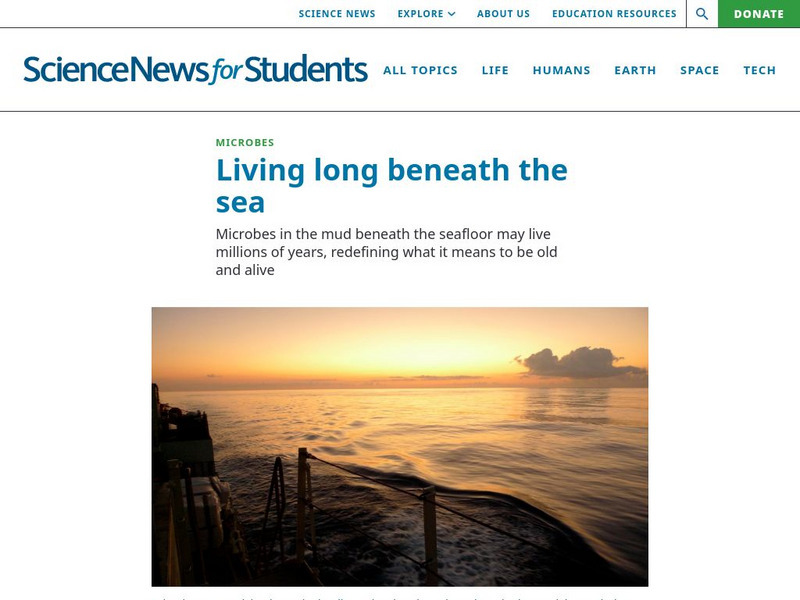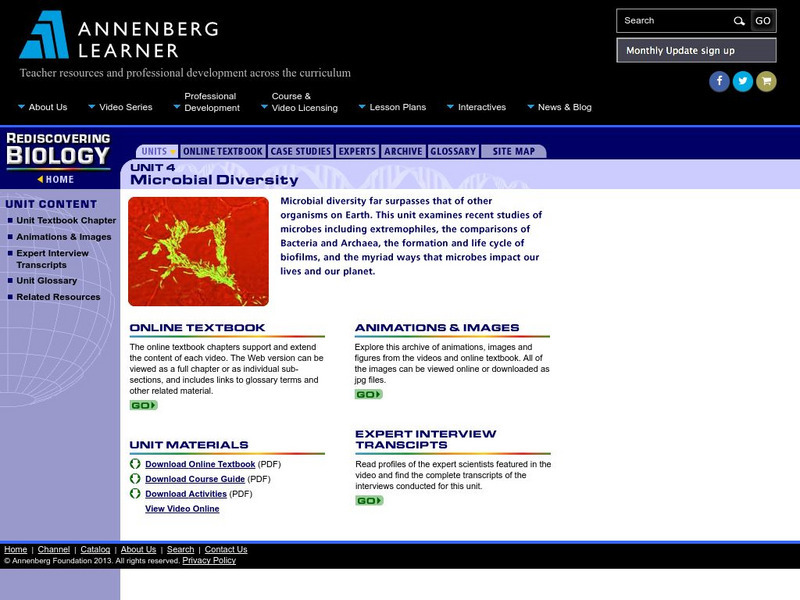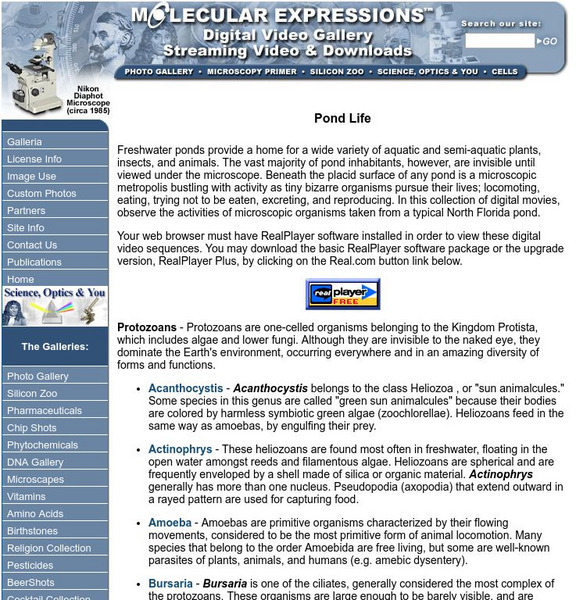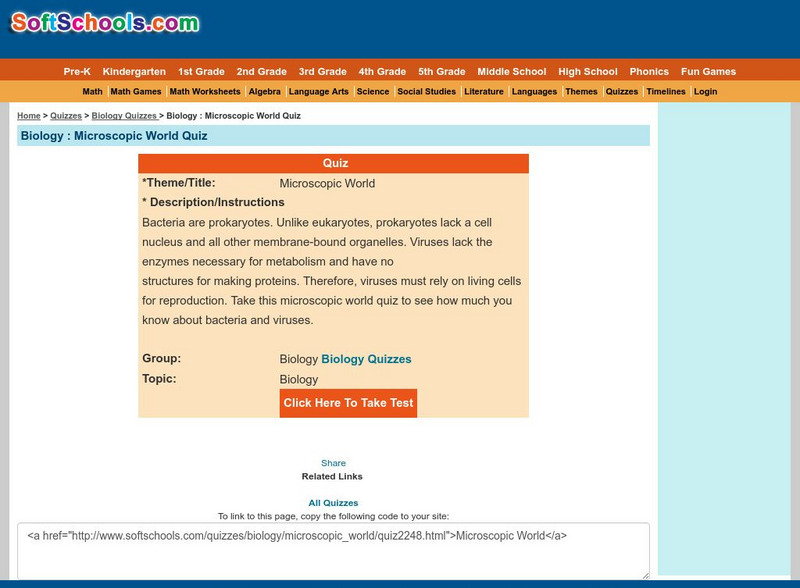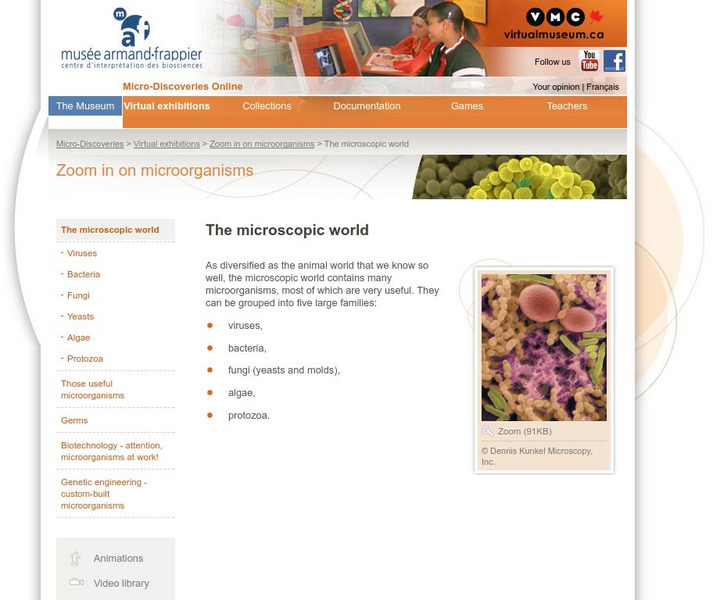Nuffield Foundation
Working with Immobilized Enzymes or Microscopic Organisms
Let the lab be a catalyst to learn about enzymes. Scholars create alginate beads filled with yeast. As part of an investigation into enzymes, they see how these beads provide a catalyst to the reaction of glucose into ethanol.
Nuffield Foundation
How Good is Your Toilet Paper?
You'll never forget the importance of toilet paper and hand washing ever again. Scholars perform an experiment to model the transfer of microbes in the bathroom. They perform three trials to test the transmission of yeast using their...
CK-12 Foundation
Types of Archaea
One of the few organisms that are classified by the environment in which they live include archaea. The video describes the phylogeny of the group and their major characteristics. It details how they reproduce and discusses the diversity...
Curated OER
Microbe Experimentation
Sixth graders formulate a question about microorganisms that can be answered with an experiment. They develop a hypothesis for a questin about microorganisms based on observations and prior knowledge. Pupils carry out an investigation on...
Curated OER
Composting and Mulching
Second graders define composting and recognize what can be composted. For this composting and mulching lesson, 2nd graders classify objects or pictures as good or bad for composting. Students write a story about life in the compost...
Curated OER
Life in a Drop of Pond Water
Students investigate living creatures that inhabit a pond and explore how various organisms satisfy their needs within their environments. In this life in a drop of pond water lesson, students examine microorganisms under...
Curated OER
Naked to the Eye
Students understand that microorganisms are too small to see but there are other indications they exist. In this microorganisms lesson, students recognize that some microorganism are helpful and some are not. Students use a microscope to...
Curated OER
Microbe Experimentation
Seventh graders study microorganisms in their environments by experimenting with milk products. In this microbes instructional activity, 7th graders read background information about microorganisms in yogurt and soured milk. Students...
Curated OER
Health: Food Borne Illnesses
Students discover how to inhibit food borne illnesses by practicing safe food-handling techniques. Among topics they examine are the advantages and disadvantages of using wooden or plastic cutting boards. After studying for the test,...
Curated OER
Bacteria Pool Party
Students investigate the organisms of bacteria. They are given a culture of bacteria that can be observed under a microscope. The students make observations that are recorded. The instructional activity includes the mention of specific...
Curated OER
Good Guys - Small Packages
Students read documentation about microorganisms in agriculture and share what they've read with partners. They taste samples of yogurt and describe the yogurt making process. They experiment with fermenting milk to recreate the yogurt...
Curated OER
Microorganism Multiplication
Seventh graders complete two experiments to learn about harmful and helpful microorganisms. In this microorganisms activity, 7th graders read background information about fungi, yeast, and club fungi. Students then complete two...
Curated OER
Spud Smear
Students study various samples of microorganisms in petri dishes. In this microorganism lesson, students place various samples of items in petri dishes and observe them after several days of incubation.
Curated OER
MAPPING A RESEARCH SITE AND COLLECTING AND PRESENTING POPULATION DATA
Sixth graders are to answer research questions based on data they collect.
NASA
Nasa: Building a Winogradsky Column [Pdf]
NASA teacher's guide to building a Winogradsky Column to study microorganisms. When this guide was first released, students were invited to participate in two webcasts with NASA scientists. The conversations from those webcasts are...
Society for Science and the Public
Science News for Students: Beneath the Sea
What does it mean to be alive? Scientists are now revisiting this question as they discover previously unknown microorganisms at the bottom of the ocean.
Annenberg Foundation
Annenberg Learner: Rediscovering Biology: Unit 4: Microbial Diversity
A complete learning module on microbial diversity that includes a downloadable textbook chapter, teacher guide, and lesson activities. The chapter can also be viewed online. In addition, there are animations, images, a video, and...
Florida State University
Florida State University: Pond Life
Explore the microscopic organisms that live in the freshwater ponds with this video collection. These video clips feature unicellular organisms, from under the microscope, showing off their daily activities. Collection includes videos of...
Other
Generation Cures: Pathogens [Pdf]
Students will use scientific inquiry to prevent infection within an organism. At the end of the activity, students will understand cell characteristics, effect of microorganisms and how the body protects against harmful microorganism....
Soft Schools
Soft Schools: Microscopic World Quiz
Take this interactive, multiple-choice quiz over microorganisms, then review your score and any missed questions at the end.
Other
Armand Frappier Museum: Micro Discoveries Online: The Microscopic World
This comprehensive exhibit focuses on the wonders of microorganisms, what they are, how they can affect our daily lives, and how they can be manipulated. Videos, games, and animations are included. Teacher resource link explains each...
















![Nasa: Building a Winogradsky Column [Pdf] Activity Nasa: Building a Winogradsky Column [Pdf] Activity](https://static.lp.lexp.cloud/images/attachment_defaults/resource/large/FPO-knovation.png)
